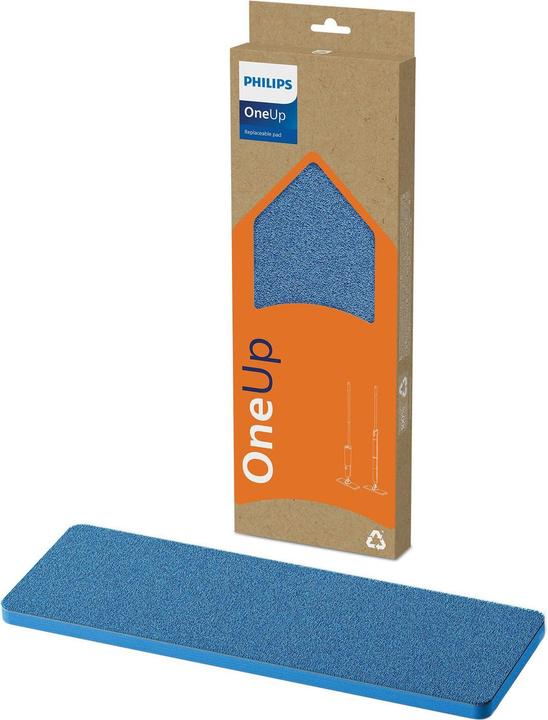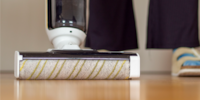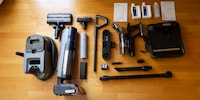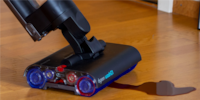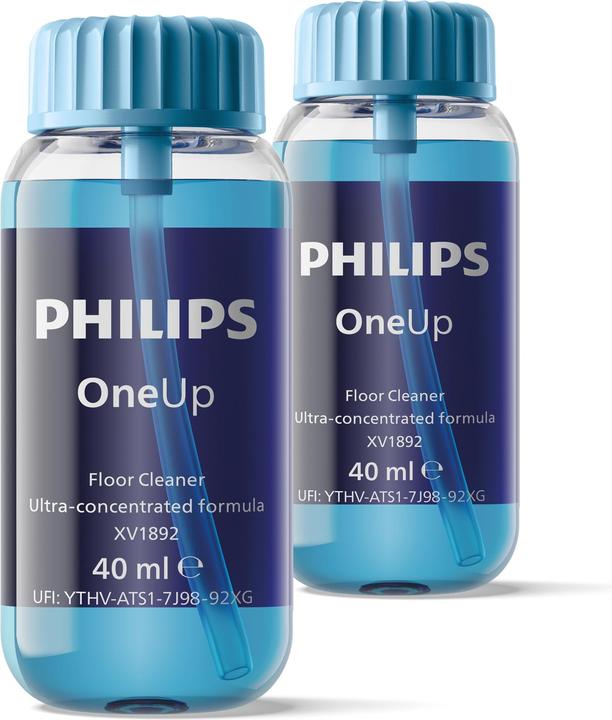
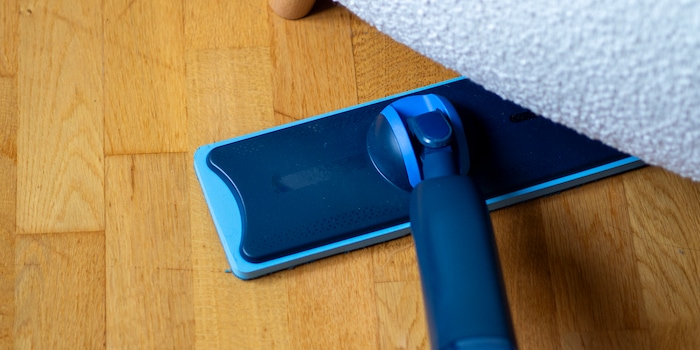
The OneUp 5000 is like a regular mop – just better
Cleaning isn’t for me. I’ll happily try anything that makes housework easier. The Philips electric mop has convinced me to ditch the bucket for good.
Without a heavy-duty wringer like those traditionally found in youth hostels, cleaning the floor really tests my patience. I’m just not experienced enough to be satisfied with the clean and dry surface I’m left with at the end. Instead, I get annoyed about the time I’ll never get back.
Philips provided me with an electric mop for testing. As a self-confessed chore shirker, I was keen to take it for a spin. The OneUp 5000 might look like an ordinary mop, but it has the advantage that the clean and dirty water tanks are built into the appliance itself. This saves me having to constantly go to the sink with a wet cloth or lug around a clunky bucket.
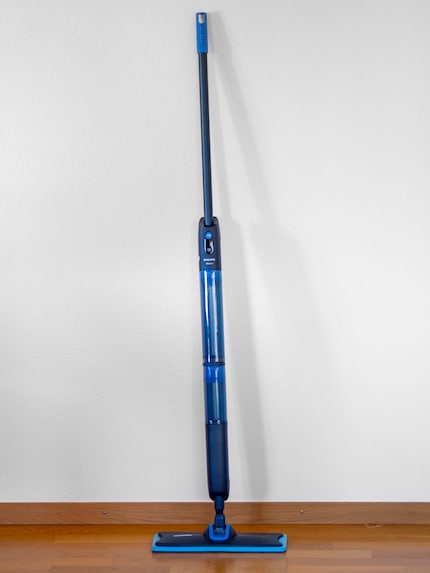
Ready to use in minutes
Before using it for the first time, all I have to do is put the handle together and tighten a screw. This just means the household aid isn’t telescopic. Although it’s quite slender, these details are a drawback when space is limited.
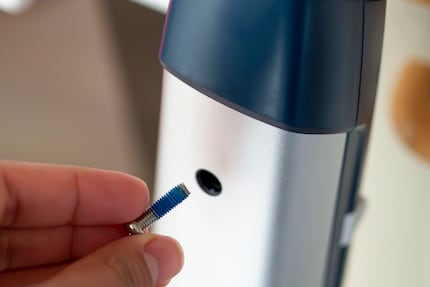
I remove the clean water tank to fill it with cleaning agent. Philips has incorporated a nifty trick for this. The cap of the cleaning agent is designed to be turned into the lid of the clean water tank. When I press the button at the top, the product is sprayed directly into the tank like from a soap dispenser. Not an essential addition, but I love well thought-out design.

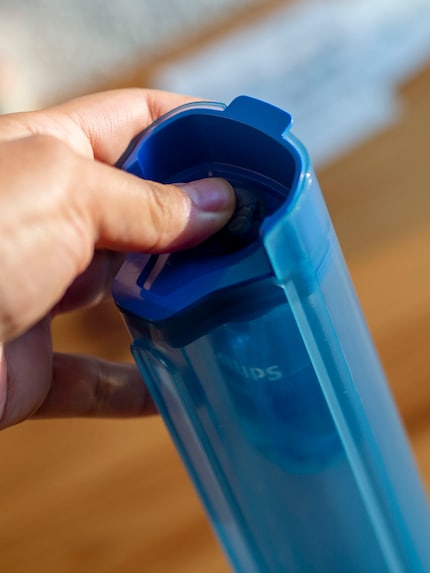
The instructions recommend four to six squirts. I press the knob six times – which turns out to be a mistake. Then I remove the bottle and hold the tank under the tap. I can add 300 millilitres to the container. The contents can be up to 50 degrees. The OneUp 5000 itself doesn’t heat the water.
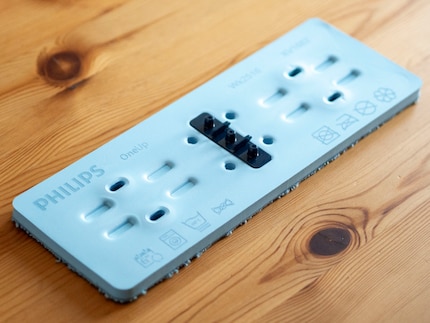
I also moisten the cloth briefly under running water – I don’t have to wring it out. Then I snap the mop onto the pad. I press the start button, and the OneUp 5000 whirs quietly away. This means clean water is now being supplied to the cloth, while the dirty water left behind is being drawn away.
No hard floor cleaner, but more convenient than an ordinary mop
I drag the cloth across my kitchen floor once I’ve vacuumed it, and feel my nose start to tingle. Once I’m done in the second room, I realise why – too much of the cleaning agent has ended up in the water. I fling open the windows and make a mental note to be more sparing with it next time.

Compared to a cordless mop, such as those from Kärcher or Dyson, the OneUp 5000 gives me less control over the amount of water I work with. Even on the lowest setting, it spreads far more cleaning agent over the floor than a wet vacuum cleaner typically would. With the second setting, the quantity increases a little.
In terms of price, the electric mop is roughly on a par with more affordable hard floor cleaners, such as the Kärcher EWM 2. But unlike them, the Philips OneUp 5000 is more agile and time-saving, because I can whizz across the floor with it.
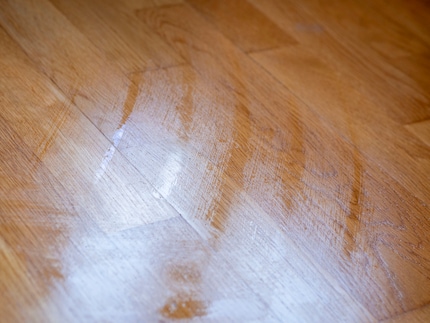
In a competition between the OneUp and an ordinary mop, I’d award the gold medal to the Philips model. Yes, it’s much more expensive, but the convenience justifies the higher price tag. It’s as manoeuvrable as a conventional mop, and also easily reaches hidden nooks and crannies under furniture. The functions are the same as with a trusty mop and bucket set, just without the drawbacks.

If I’m carrying it around between rooms, I don’t have to wring it out vigorously beforehand, so unwanted drops of water don’t end up on the floor. But it’s not just the floor that’s spared; no liquid lands on me either when I’m using or cleaning the appliance. This is exactly what mopping should be like.

Cleaning process
As soon as the tank contains 200 millilitres of dirty water, I remove the lid and empty the contents down the drain. The OneUp doesn’t give me a signal when the tank is empty. While cleaning the 70 square metres of my home, I have to empty the dirty water tank twice and fill the clean water tank twice.
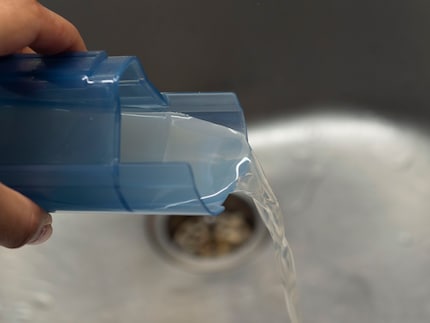
After cleaning the floor, I wash the containers out with a little washing-up liquid. Unfortunately, they’re not dishwasher-safe. According to Philips, I can throw the cloth and plastic pad into the washing machine at 40 degrees, and wash them with an antibacterial agent. The manufacturer recommends replacing the pad after six months.
Long battery life
The battery life of up to 70 minutes is more than enough for my home. It takes just one third of the charge to cover all the floors. According to the manufacturer, the battery should be enough for an area of 125 square metres, and be fully charged in four hours. The OneUp is charged via a USB-C port. Philips only supplies a USB-C to USB-A cable for this. The second minor flaw: because the electric mop doesn’t stand on its own, I have to lean it against the wall. This is fine when charging, but a hassle when cleaning.
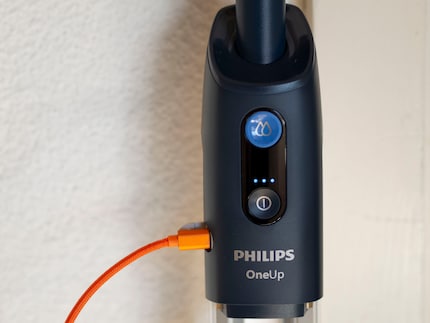
But, on the whole, I’m satisfied with the OneUp 5000 and the clean floor it gives me. Even if you’re a keen cleaning enthusiast, the electric mop can reduce your workload. The cordless appliance is great to whip out for a quick clean. Maybe I’ll tackle the floor again soon.
In six months or so.
In a nutshell
Like an ordinary mop – just better
The Philips OneUp 5000 makes mopping much more convenient, saving time and effort. The combination of built-in clean and dirty water tanks, good manoeuvrability and long battery life lets you move through rooms quickly and without spills.
It’s more expensive and somewhat bulkier than an ordinary mop. Plus, the water supply is harder to control than with a hard floor cleaner. Still, the convenience and ease of use more than outweigh the disadvantages.
Pro
- Ready to go in no time
- Doesn’t drip when carried around
- Easily reaches under furniture
- Long battery life
Contra
- Not telescopic
- More expensive than a regular mop
- Water supply harder to control than with hard floor cleaners
Painting the walls just before handing over the flat? Making your own kimchi? Soldering a broken raclette oven? There's nothing you can't do yourself. Well, perhaps sometimes, but I'll definitely give it a try.
